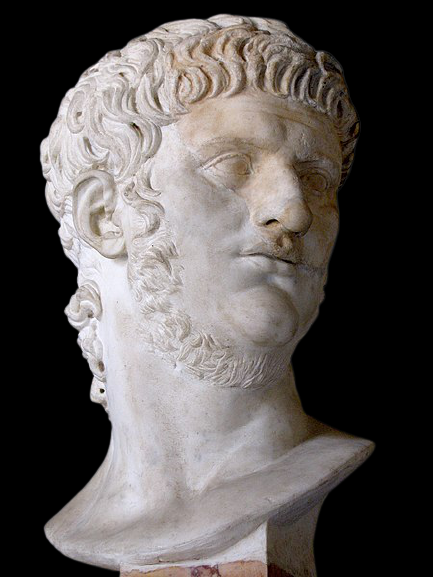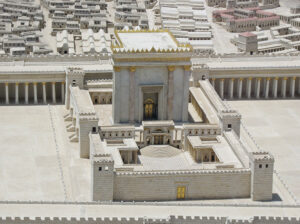I will be posting in coming months a case for the Book of Revelation being a response to events at the time of the emperor Hadrian, in particular to the catastrophic results of the Bar Kochba war (130-135 CE). But first let’s look at the arguments for dating the book to just prior to the destruction of the Temple in 70 CE. We will soon examine the more widely accepted grounds for dating the work to the time of Domitian (81-96 CE).
The following points are derived from pages 570 and 571 of Klaus Berger’s Theologiegeschichte des Urchristentums.
1. Large scale persecutions of Christians were unknown
We begin with Revelation 2:13, a message to one of the seven churches:
I know where you live—where Satan has his throne. Yet you remain true to my name. You did not renounce your faith in me, not even in the days of Antipas, my faithful witness, who was put to death in your city—where Satan lives.
The author, Berger concludes, knows of only one martyrdom in Asia Minor. Compare the account of Eusebius who informs us that it was at a later time, in the time of Domitian, that more serious persecution was undertaken:
Domitian, having shown great cruelty toward many, and having unjustly put to death no small number of well-born and notable men at Rome, and having without cause exiled and confiscated the property of a great many other illustrious men, finally became a successor of Nero in his hatred and enmity toward God. He was in fact the second that stirred up a persecution against us, although his father Vespasian had undertaken nothing prejudicial to us.
(Eusebius, Ecclesiastical History 3.17)
But the evidence even for Domitian’s persecution is sparse. The author of Revelation knows of Christian martyrs in the city of Rome (presumably from the time of Nero) only by hearsay. Revelation 17 refers to a city on seven hills “drunk with the blood” of the saints.

2. Nero Redivivus
The Beast of Revelation is a reverse image of the slain and resurrected Christ (compare Rev. 5:6 with Rev 13:3, 12), an image that is surely inspired by the rumours of Nero having returned after his reported death. These rumours first emerged in the eastern part of the empire in the year 69 CE, the famous “year of the four emperors” following Nero’s suicide:
About this time Achaia and Asia were terrified by a false rumour of Nero’s arrival. The reports with regard to his death had been varied, and therefore many people imagined and believed that he was alive. The forces and attempts of other pretenders we shall tell as we proceed; but at this time, a slave from Pontus or, as others have reported, a freedman from Italy, who was skilled in playing on the cithara and in singing, gained the readier belief in his deceit through these accomplishments and his resemblance to Nero. . . . Many came eagerly forward at the famous name, prompted by their desire for a change and their hatred of the present situation. The fame of the pretender was increasing from day to day when a chance shattered it.
Tacitus, Histories 2.8)
There was another “false Nero”, possibly two more, some years later, but the earliest enthusiasm for a viable return of the emperor was not long before Vespasian became emperor.
3. Lord and God — emperor worship
One of the reasons many commentators have assigned the Book of Revelation to the reign of Domitian is that Domitian assigned himself the title Dominus et Deus (=Lord and God). Berger, though, notes that the same title for the Roman emperor is documented earlier. Especially noteworthy, is that three cities of Asia Minor, Ephesus, Pergamon and Smyrna, were granted the imperial privilege of hosting the cult of emperor worship.
4. The number of the beast
Though various interpretations have been proposed, the number 666 in Rev 13:18 may be thought best to apply to KAISER NERON. Transliterated into Hebrew: nrwn qsr = 50 + 200 + 6 + 50 + 100 + 60 + 200.

5. Jerusalem and the temple still standing
Rev 11:8
And their dead bodies shall lie in the street of the great city, which spiritually is called Sodom and Egypt, where also our Lord was crucified.
Rev 11:1-2
And there was given me a reed like unto a rod: and the angel stood, saying, Rise, and measure the temple of God, and the altar, and them that worship therein. But the court which is without the temple leave out, and measure it not; for it is given unto the Gentiles: and the holy city shall they tread under foot forty and two months.
The above passages suggest that the city is still intact and that its temple is still standing.
6. Early stage of church development
There is nothing in the Book of Revelation to indicate a hierarchical (i.e. ruling bishops) organization and control of church congregations. The prophet John appears to be able to speak as a peer directly to the church members.
7. Gospels not yet written
According to Berger, Revelation “shows such great affinities to the old synoptic tradition (especially Q), to Pauline and co-Pauline theology, that a gap of 30 to 40 years seems completely unrealistic. The relationship of the Apocalypse of John to the synoptic tradition is such that the Gospels are not yet presupposed.” Some elements in the gospels do have their allusions in Revelation but not as part of a pre-gospel “Jesus tradition”.
.
From the above considerations, Klaus Berger concludes that the most likely time the book was written was just prior to the destruction of the Jerusalem Temple, that is, during the “year of the four emperors”, 68/69 CE. This date, he suggests, is fixed by Revelation 17:10
And there are seven kings: five are fallen, and one is, and the other is not yet come; and when he cometh, he must continue a short space.
Berger, Klaus. “Zur Frühdatierung der Johannesapokalypse [=On the Early Dating of the Apocalypse of John].” In Theologiegeschichte des Urchristentums: Theologie des Neuen Testaments, 2., Überarb. und erw. Aufl. 568–71. Tübingen: Francke, 1995.
If you enjoyed this post, please consider donating to Vridar. Thanks!

Not sure I understand who the seven kings are in this scenario. I’m assuming Nero is still 5, so the “one who is” is Galba and the one who is coming but will have a short time is Otho? Otho did call himself Nero, but the Vitellius would be the Beast, right?
I need some help with mapping this out.
Just my opinion, for what it’s worth. I think Revelation is from the perspective of Israel, realizing that quick changes in Rome wouldn’t even provide a ripple in Israel, considering the time it takes to realize who’s in charge in Rome. Based on that, Galba (7 months), Otho (3 months), and Vitellius (8 months) wouldn’t even be noticed in Israel. So, Julius (1), Augustus (2), Tiberius (3), Caligula (4), Claudius (5), Nero (6), Galba/Otho/Vitellius (none-entity from Israel’s standpoint), Vespasian (7 – “he must remain only a little while”, that is, in ISRAEL, less than two years, and finally Titus (8 – “belongs to the seven, and it goes to perdition”, that is, son of Vespasian (7), and the really bad guy deserving “perdition”, because he was the actual guy that destroyed the Temple. Josephus refers to Titus, when General in Israel, as King and Caesar (5.2.2). That would place Revelation after 70AD, how far after is anyone’s guess. Still could be 135AD. Bad guys are remembered for a long time.
There are so many, many ways that Revelation 17 (7 kings, 5 fallen, one is….) has been interpreted that I meant merely to allow the post to infer that those kings could find an interpretation to match the year 68/69 CE.
I will post something more comprehensive that explains how another author (not Berger but one who has the same ideas as Berger) explains the prophecy as an indicator of the year before the fall of the Temple.
Is there some truth in Pippy from Newfoundland’s 600 pages on Revelations having an Egyptian origin? https://books.google.com/books?id=6LDGY-QJlfEC&printsec=copyright#v=onepage&q&f=false
As noted elsewhere, there’s the possibility of a two-stage composition, with a non-Xn core at the time of Nero “bookmarked” by later Xn additions. My riff on J. Massingbyrde Ford’s idea that the Baptizer himself wrote this is that a follower of the Baptizer wrote that core. https://wordsofsocraticgadfly.blogspot.com/2017/11/who-wrote-book-of-revelation.html